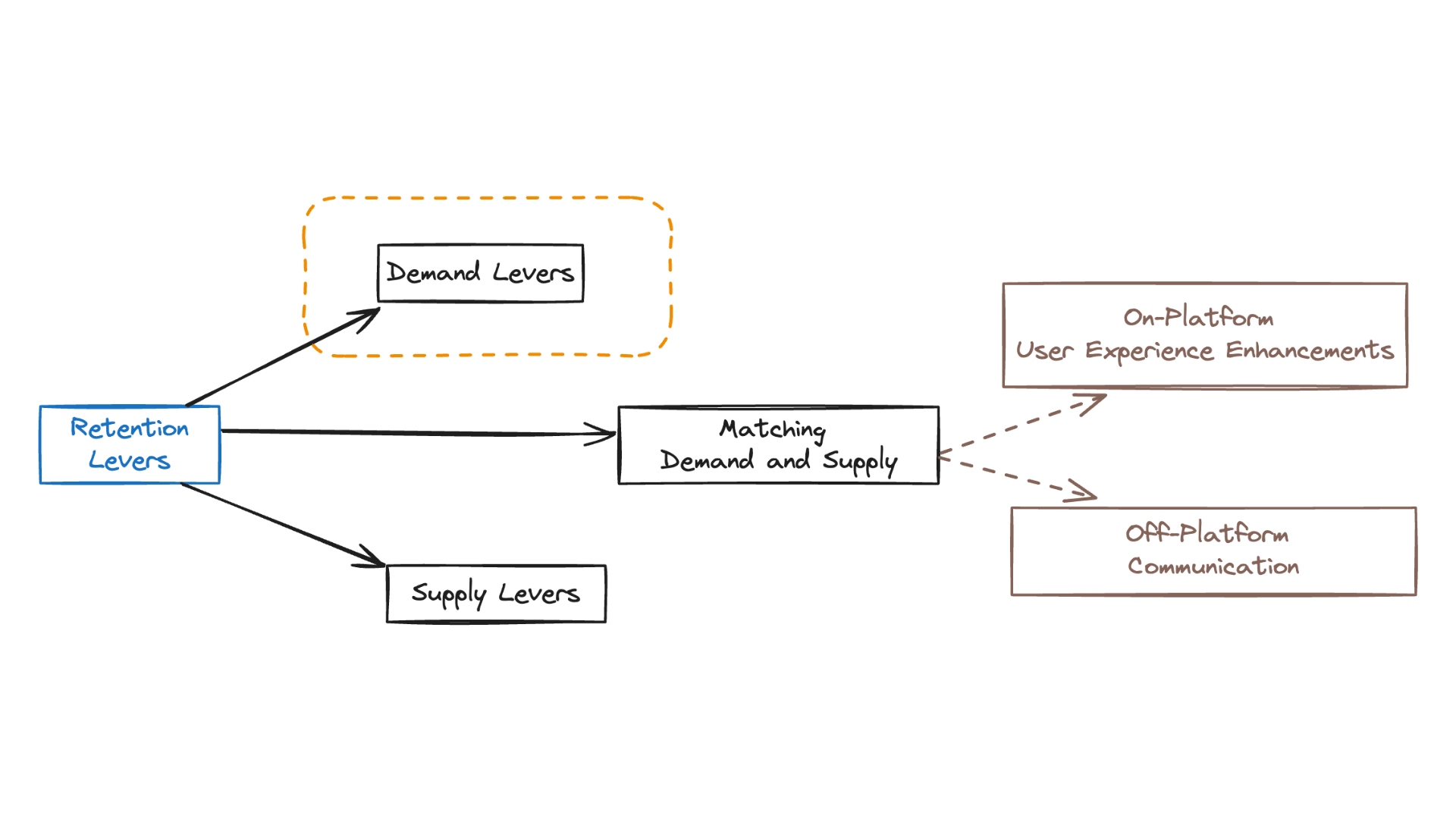How Do Demand-Side Levers Improve Customer Retention?
Transitioning from the overview of retention levers, we focus on the demand-side levers that target customer acquisition strategies crucial for long-term retention.
These levers are essential for attracting the right kind of customers who are more likely to stay engaged over time. Let's explore.

Profiling Long-Term Retained Users:
Effective customer retention starts with understanding who your customers are at a granular level. This involves several layers of profiling:
- ☞ Basic Demographics: Gather data on age, location, gender, and occupation. For instance, a luxury brand may find their long-term customers are typically females, aged 30-50, in urban areas.
- ☞ Profiling Based on Interests: Analyze browsing and purchase histories to identify customer interests. A sports apparel store might discover that customers who view marathon-related content have higher retention rates.
- ☞ Archetype Profiling: Segment customers into behavioral archetypes. For example, a tech gadget store might classify customers as 'Innovators' or 'Early Adopters,' noting that Early Adopters tend to have higher lifetime value.
Utilizing Data for Strategic Campaign Design:
With a detailed understanding of the customer profiles, businesses can then tailor their marketing strategies:
- ☞ Communication and Campaign Design: Develop messaging that resonates with each segment. If 'Early Adopters' are identified as a key segment, the campaign could focus on new technology features and exclusive previews.
- ☞ Choosing the Right Channels: Select channels based on where these profiles are most active. Continuing the previous example, if Early Adopters are frequent LinkedIn users, focusing on LinkedIn ads might yield better retention outcomes than broader social media campaigns.
Takeaway:
By deeply understanding who your long-term customers are and how they interact with your brand, you can design targeted campaigns that capture the attention of more potential power users.
This strategic approach leads to higher retention rates and a more sustainable business model.